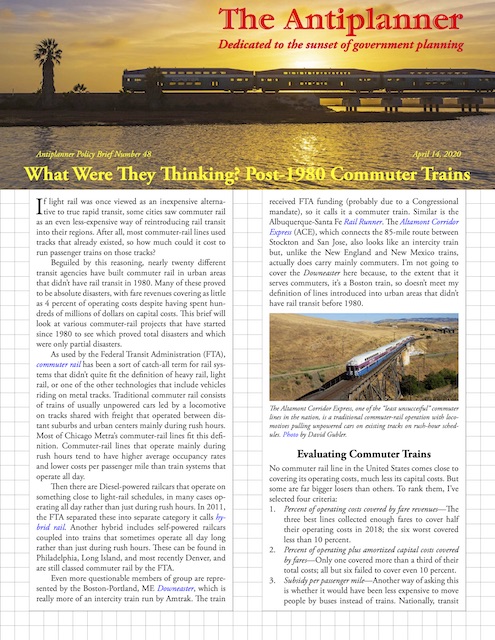If light rail was once viewed as an inexpensive alternative to true rapid transit, some cities saw commuter rail as an even less-expensive way of reintroducing rail transit into their regions. After all, most commuter-rail lines used tracks that already existed, so how much could it cost to run passenger trains on those tracks?
 Click image to download a four-page PDF of this policy brief.
Click image to download a four-page PDF of this policy brief.
Beguiled by this reasoning, nearly twenty different transit agencies have built commuter rail in urban areas that didn’t have rail transit in 1980. Many of these proved to be absolute disasters, with fare revenues covering as little as 4 percent of operating costs despite having spent hundreds of millions of dollars on capital costs. This brief will look at various commuter-rail projects that have started since 1980 to see which proved total disasters and which were only partial disasters. Continue reading







